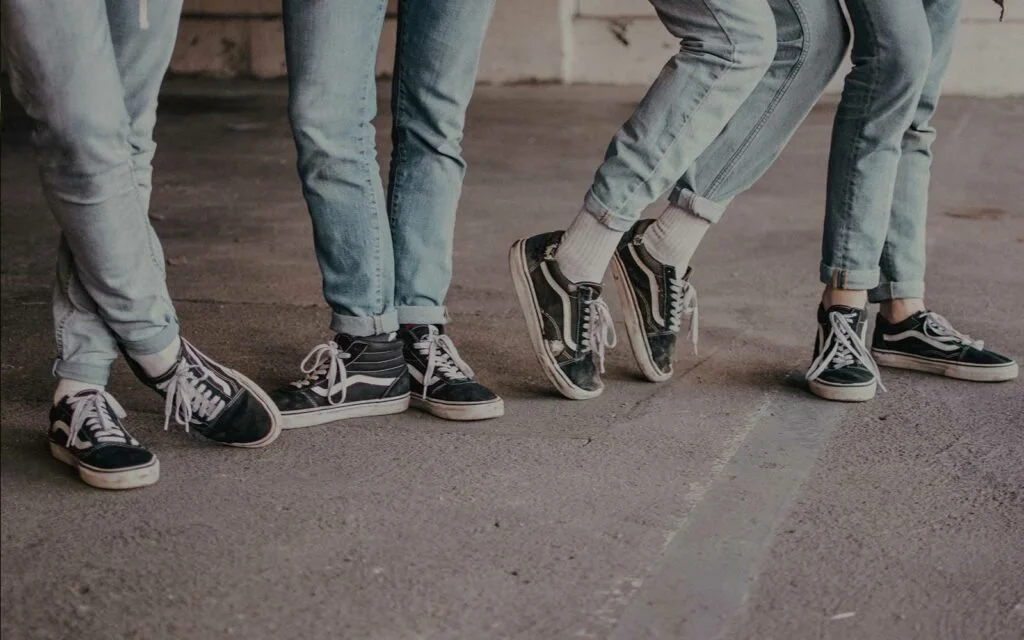
INSIGHT | MAY 2019
Why brands should be ungendered
Reaching consumers at a level transcending the binary
Consumer needs
Engagement | Retail
As Gen Z grows into it’s spending potential and power to shape consumer behaviour, brands are increasingly learning to cater to the progressive changes the young cohort brings. Recent years have seen antiquated gender norms continue to be shattered through vigilant activism and a societal shift towards a culture of acceptance and fluidity. This culminated in a 2016 study on Gen Z attitudes towards gender declaring that 82% of those asked believe that gender no longer defines an individual as it once did.
Open access to information online has given people the understanding, agency, and freedom to present themselves as they wish, whilst the proliferation of social media has meant that marginalised communities are more visible than ever and being accepted into mainstream discourse. The slow dissolution of the gender binary in favour of a more fluid approach towards the construct has broadened the spectrum of identities, and the possibilities for brands alongside it.
At an aesthetic level, male and female categories are heading towards more masculine and feminine ones. In 2016, American makeup brand Cover Girl revealed YouTuber and beauty influencer James Charles as their very first male brand ambassador — the first Cover Boy, as it were. Charles’ appointment, and the widespread lauding of it, paved the way for Glossier’s new sister brand, Glossier Play, to incorporate Troye Sivan and Donte Colley in their launch campaign which uses makeup to express identity regardless of gender. The LGBTQ media organisation GLAAD reports that 12% of young people identify with a signifier other than cis-gender, which is when a person’s assigned gender at birth matches the gender they personally identify with. For brands to be successful and supported by a generation mindful of inclusivity, individuality, and — most of all — equality, it’s undeniable that they too must be all these things.
Products have traditionally been gendered to provide consumers with something to associate themselves with. A 2014 study found that the positive associations made with gendered branding were so strong that both men and women would have preferred to purchase a product that didn’t correspond with their own gender, over buying one that was gender neutral or unisex. That these results came 2 years after the Bic for Her product debacle proves just how slowly notions of gender have moved in wider society.
Now, 48% of people asked by us said that they wouldn’t care how a product’s packaging was gendered when it came to purchasing, as long as the product within was what they wanted. The positive associations consumers make with a brand have evolved from gender to those of quality and function. Established in the lates 80s, Aesop is arguably one of the first gender neutral brands, focused on sourcing high quality ingredients to create high quality products. The consumers’ genders become an obsolete factor to consider when designing and producing the products because they’re geared to their personality and ethics instead, which are of course genderless.
Many new brands have recently entered this space, especially within the beauty and skincare sphere, creating genderless products based on their brand values and audience needs. DECIEM is an umbrella company housing a number of brands using science to create their products. The affordable brand in their holding, and by far the most successful, The Ordinary, has reached cult status within the beauty community and amongst regular consumers alike. With a focus on remaining affordable yet transparent about their ingredients and how they function, the brand has resonated with consumers who care about the products they are using beyond a huge marketing push. An increasing number of consumers carry our extensive research into a product before purchasing because they also care about the product, and brand’s, journey to them. In the same vein as Aesop’s apothecary style packaging, The Ordinary’s pharmaceutical identity feeds into their chemistry driven brand, and remains genderless.
Much like beauty and skincare, the fragrance industry has famously been segregated by gender for decades. Notions of masculine and feminine scents have been assigned binary genders and marketed as such to the extent of the ubiquitous Jean Paul Gaultier bottles in the shapes of male and female torsos. Now, as individuals move towards an internal sense of gender, it’s important that brands are able to work outside of the binary to appeal to more people. When you enter a department store, Le Labo’s focus on personalisation and craft sets them apart from traditional fragrance counters as their fragrances are compounded upon purchase, and the packaging printed with the customer’s name. Involving the consumer in the product creation process, regardless of who they are, creates an emotional connection holding more value and understanding of the consumer.
Unless a product is designed for specific anatomy, such as menstrual products or underwear, there is no grounds for it to be gendered. John Lewis, the British high street department store, removed ‘boys’ and ‘girls’ labels from all of its own-brand children’s clothing to champion personal and free choice without judgement. And although the world of fashion and personal styling is making strides in rethinking gender, a lot of brands still have a long way to go. The ‘pink tax’, where female gendered products cost more than their male counterparts, is a form of gender based discrimination. It’s found on everyday products from deodorants and razors, to clothing and even children’s toys. Brands no longer have the luxury of marketing this way when, increasingly, new and future consumers gravitate towards transparent and socially responsible companies. To truly reach audiences with influence and remain relevant, being genderless is the most sustainable and conscious route for brands to embark upon next.
The positive associations consumers make with a brand have evolved from gender to those of quality and function.
The positive associations consumers make with a brand have evolved from gender to those of quality and function.
Further reading


